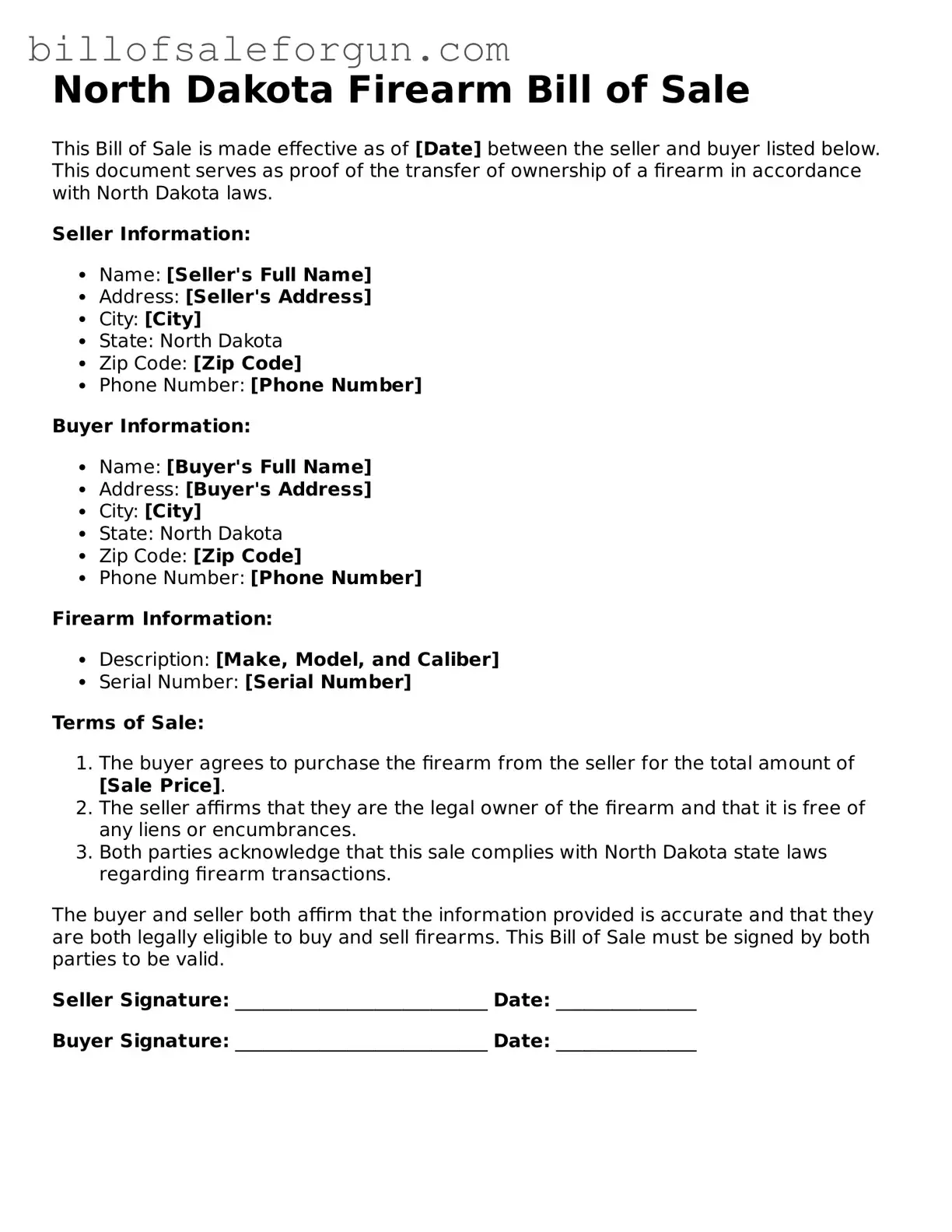Similar forms
The North Dakota Firearm Bill of Sale form shares similarities with a Vehicle Bill of Sale. Both documents serve as proof of transfer of ownership. In the case of a vehicle, the seller provides information about the make, model, and VIN, while the firearm bill includes details like the make, model, and serial number of the firearm. Both forms typically require the signatures of both the buyer and seller to validate the transaction.
Another document akin to the Firearm Bill of Sale is the Personal Property Bill of Sale. This form can be used for various types of personal property, not just firearms. Like the firearm bill, it captures essential details about the item being sold, including a description and the sale price. Both documents also protect the interests of the seller and buyer by providing a written record of the transaction.
The Lease Agreement is another document that shares characteristics with the Firearm Bill of Sale. While a lease agreement outlines the terms for renting property, it also includes details about the parties involved, the item being leased, and the duration of the lease. Both documents require clear identification of the parties and the item, ensuring that there is a mutual understanding of the terms involved.
When engaging in transactions involving personal property, it's essential to understand the various forms that may be required, such as a Bill of Sale. This document is significant for recording the transfer of ownership and serves as proof of the transaction. For more information and templates for different types of Bill of Sale forms, you can visit https://documentonline.org/blank-bill-of-sale/, which provides a comprehensive resource for creating these important legal documents.
The Equipment Bill of Sale is similar in nature to the Firearm Bill of Sale as it documents the transfer of ownership of specific equipment. This could include machinery or tools. Both forms require information about the item, such as its condition and any warranties, as well as the signatures of both parties to finalize the transaction.
A Rental Agreement also has parallels with the Firearm Bill of Sale. It details the terms under which one party rents property from another. While it does not transfer ownership, it specifies rights and responsibilities, similar to how the firearm bill outlines the transfer of ownership and the responsibilities of the buyer and seller regarding the firearm.
The Gift Receipt can also be compared to the Firearm Bill of Sale. While the gift receipt does not involve a monetary exchange, it serves as a record of the transfer of ownership. Both documents include details about the item and the parties involved, helping to clarify ownership and avoid disputes in the future.
Lastly, the Warranty Deed is similar in that it documents the transfer of property ownership, though it typically pertains to real estate. Like the Firearm Bill of Sale, it includes information about the parties and the property being transferred. Both documents require signatures to validate the transfer, ensuring that all parties agree to the terms outlined.
